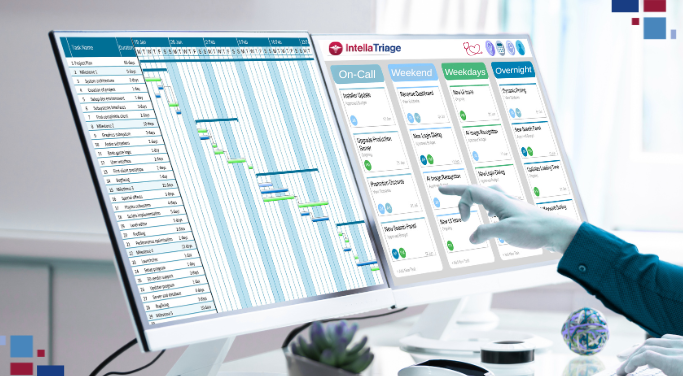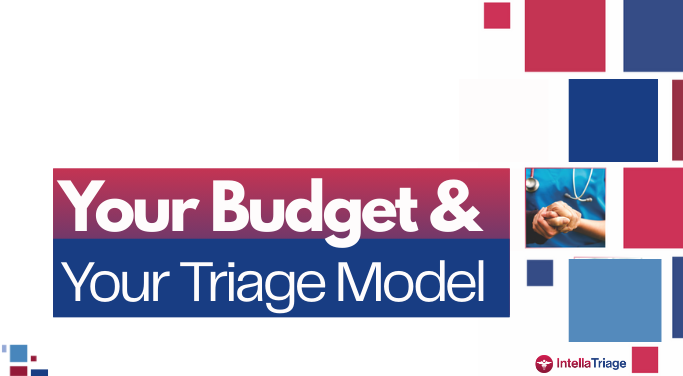A colleague recently detailed his family’s experience when his mother was on hospice:
“Mom had been ill on and off for several years, with palliative care managing her symptoms between acute bouts of severe illness and hospitalization. During her final hospitalization, doctors told us it was time to transition her to hospice care. I knew it would be a short time until she passed, but my family was surprised at the rapidity of her decline. Once her medical team removed the machines, Mom was gone within a few hours. We received excellent care, had time to say our goodbyes, and Mom passed peacefully. But there were some surprises:
- The doctors recommended hospice just before noon, and we agreed. However, the admissions nurse didn’t arrive until nearly 7 p.m. Those were hours we spent in limbo, and I felt compelled to call the hospice several times to get some direction.
- Our nurse stayed with us the entire time, given how short a time Mom was on service. This was lovely, but I was surprised the nurse stayed with us by the bedside. Conversely, my sisters were also surprised: to find out that this was unusual—nurses rarely stay with hospice patients for the entire episode.
- Mom passed so quickly after admission to hospice. In hindsight, it’s clear she was admitted too late. There were signs that she was not going to get better, yet there was no ‘navigator’ to help us better understand where she was along the path toward hospice and what her actual health status was. I always thought someone would explain things better.”
Hospice Expectations vs. Reality: The Impact on Patient Experience
So what do patients and families expect when it comes to hospice, and how does this impact their overall patient experience?
- Hospice is a place. Many people think hospice is a physical facility rather than a service. The idea of “admitting Mom to hospice” may conjure visions of a hospital-like building where she will spend her final days. However, societal and regulatory efforts have made great strides in allowing patients to remain at home when receiving hospice care. Hospice providers work hard to prevent unnecessary hospitalizations and keep patients in their preferred setting.
- 24-hour bedside care. Family members often expect clinical support around the clock once their loved one is admitted. This is rarely the case. While hospice nurses and aides visit patients regularly and offer on-call support, continuous bedside care is typically reserved for crisis situations. When this expectation is not managed upfront, families may feel unsupported, negatively impacting their patient experience.
- Definitive answers. Many families expect clear predictions about when a patient will pass. While doctors and nurses can often estimate a timeframe, the dying process is not always predictable and doesn’t follow a strict timeline. This uncertainty can create stress for families, making communication and education critical to a positive patient experience.
Home Health Expectations vs. Reality: Setting the Stage for a Positive Patient Experience
The same expectation gaps exist in home health. When patients transition to home health after an acute illness or hospitalization, they often misunderstand what services are provided, affecting their satisfaction with care.
- Home health includes personal care. Many patients assume home health covers bathing, dressing, and light housekeeping. In reality, home health is skilled nursing and therapy services, while personal care falls under home care. Clarifying this distinction early helps ensure a better patient experience.
- Immediate access to a clinician. Some patients believe they will have on-demand access to a nurse, but home health operates on scheduled visits, not continuous care. When expectations are not managed effectively, patients may feel neglected, even if they are receiving appropriate care.
- Quick recovery. Patients and families may expect a speedy return to normal function. While home health plays a crucial role in recovery, progress depends on the individual’s condition, adherence to care plans, and overall health. Helping patients set realistic recovery goals improves their experience and satisfaction with care.
The Great Expectations Mismatch: How It Affects the Patient Experience
When expectations don’t align with reality, patient and caregiver experience suffers. Even if an episode of care follows the plan perfectly, the perception of the experience can be vastly different. If a patient expects A but receives B—without an explanation or clear indicator of why—frustration and dissatisfaction are inevitable. Poorly managed expectations can lead to increased anxiety, lack of trust in providers, and even negative word-of-mouth about a healthcare organization.
Bridging the Divide: Managing Expectations to Improve the Patient Experience
We spoke with an IntellaTriage partner, an executive from a large health system, about how they manage expectations from the very beginning to ensure a smooth transition into service. Here’s what they shared:
Meeting Patients Where They Are Upon Admission
The admission process is a critical moment in a patient’s journey. First impressions matter, and how providers approach patients at this stage significantly impacts their experience and outcomes.
- Assess emotional and physical state. Patients at admission, when a stranger arrives at their door, are likely experiencing anxiety, fear, or discomfort. It is essential that healthcare providers assess their patient’s – and caregiver’s – emotional and physical state with sensitivity. A warm greeting, a calm demeanor, and reassurance can help ease their stress and make them feel more at ease.
- Consider cultural and language differences. Each patient comes from a unique background, and cultural differences or language barriers can impact their understanding and comfort level. Providers should use interpreters when necessary and be mindful of cultural sensitivities and respectful of the patient’s values.
- Personalize communication. Patients have different levels of health literacy and varying degrees of familiarity with medical care. Taking the time to explain things in a way they understand—whether through simpler explanations, visual aids, or additional clarification—helps bridge gaps in understanding, create more patient-centered care, and improve the overall patient experience.
- Practice active listening. Effective communication begins with listening. Providers should encourage patients and their families to express concerns, ask questions, and share their expectations. By actively listening and responding with empathy, healthcare teams build trust, demonstrate genuine compassion, and foster a sense of partnership in care.
Ensuring Clear and Consistent Communication to Enhance the Patient Experience
- Introduce yourself and set expectations. A simple introduction goes a long way. Healthcare professionals should introduce themselves, explain their role, and provide a brief overview of what the patient can expect during their course of services. This transparency helps reduce uncertainty and improves patient confidence in their care.
- Use clear, jargon-free language. Medical terminology can be overwhelming. confusing. Providers should communicate in clear, easy-to-understand language to ensure patients comprehend their diagnosis, treatment plan, and next steps. Checking for understanding along the way is also crucial.
- Provide both verbal and written instructions. Patients may be too stressed to retain all verbal instructions. Supplementing explanations with written materials, visual aids, or electronic resources can help reinforce important information and improve retention.
- Maintain team consistency. Everyone involved in the patient’s care should align on key messages to prevent confusion and mixed expectations. Consistent messaging regarding treatment plans, medications, and services ensures patients receive clear and uniform information.
- Encourage questions and repeat key points. Patients should feel comfortable asking questions without hesitation. Providers can foster open communication by inviting patients to voice concerns and by repeating key information at different points during their care to reinforce understanding.
The Bottom Line: Why Managing Expectations Is Key to a Positive Patient Experience
When patients and families enter home health or hospice care, their expectations shape their experience. Meeting patients where they are upon admission enhances their experience, builds trust, and improves health outcomes. By setting realistic expectations, offering clear and compassionate communication, and prioritizing patient education, providers can bridge the gap between what patients anticipate and what they receive—leading to a better patient experience for all involved.
Managing expectations isn’t just about reducing complaints—it’s about ensuring that patients and their families feel informed, supported, and confident in the care they receive. Implementing these best practices can lead to better patient engagement, increased satisfaction, and improved adherence to treatment plans, ultimately contributing to a higher standard of care. In an industry where experience and satisfaction are directly tied to outcomes, prioritizing expectation management is key to delivering exceptional patient care.
Contact Us for a Consultation
Ready to optimize your triage process? Reach out to us today for a consultation tailored to your needs. Let’s elevate your patient care together.
More From The Blog
For hospice and home-health organizations, staffing after-hours shifts presents a unique challenge. Patients’ needs don’t magically pause between office hours, yet many agencies still rely on outdated scheduling models that leave nurses exhausted, escalation rates high, and patient satisfaction vulnerable. In this post, we’ll explore how thoughtful scheduling, strategic outsourcing, and nurse-first triage support can [...]
Why Nurse-First Care Will Always Matter More We are drawing a line in the sand. No. AI cannot accomplish everything. Sure, you could let AI answer your after-hours calls. But ask yourself: why would you want to if you don't have to? On the other end of that phone is not just a "call" — [...]
Home health and hospice leaders know the strain of delivering quality care 24/7 with shrinking staff, rising patient volumes, and growing oversight. One strategy many haven’t fully leveraged yet is after-hours triage. A nurse-first triage model is about more than answering calls. Outsourcing your nurse triage function is a strategy that saves money, strengthens staff [...]









